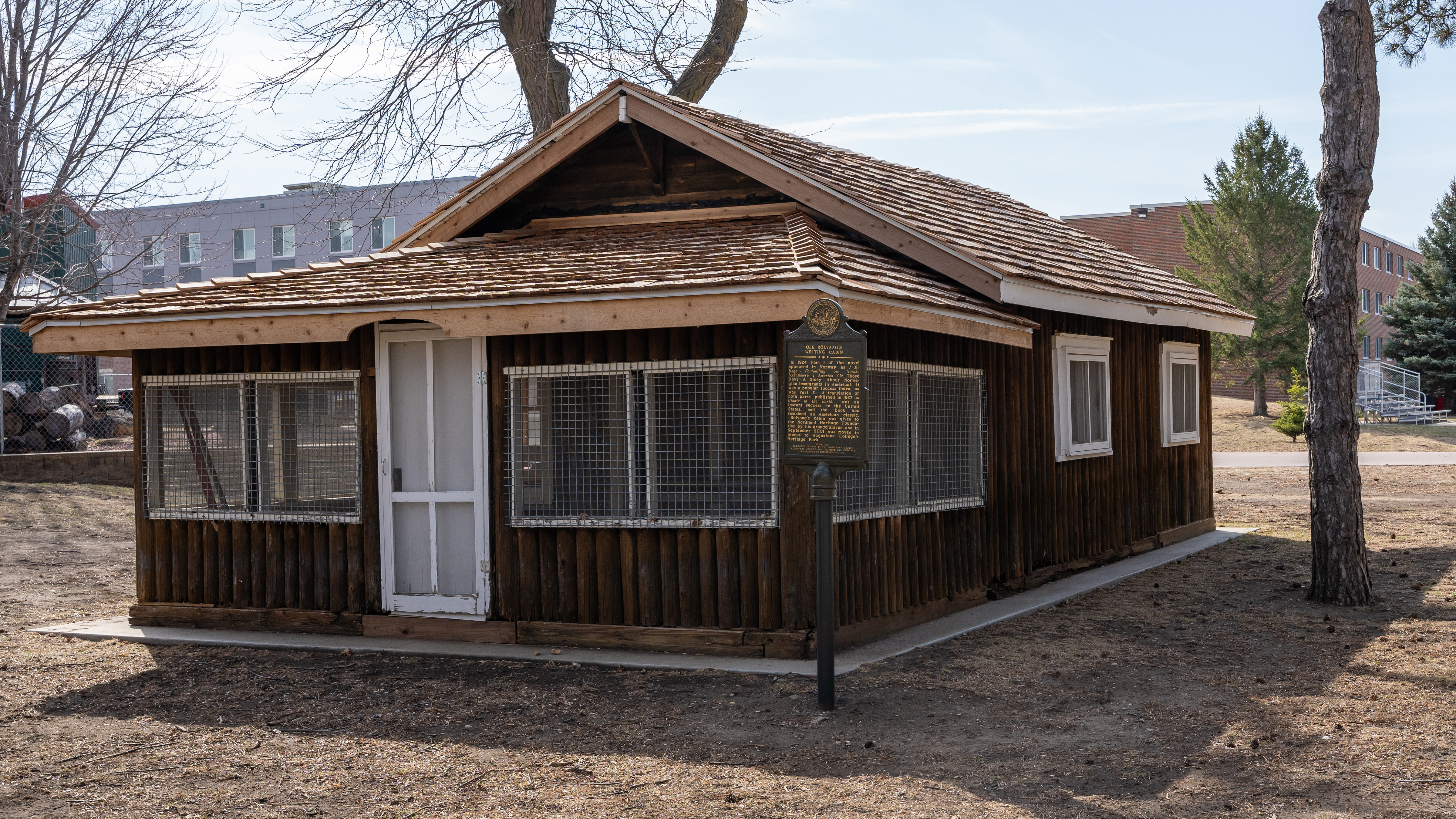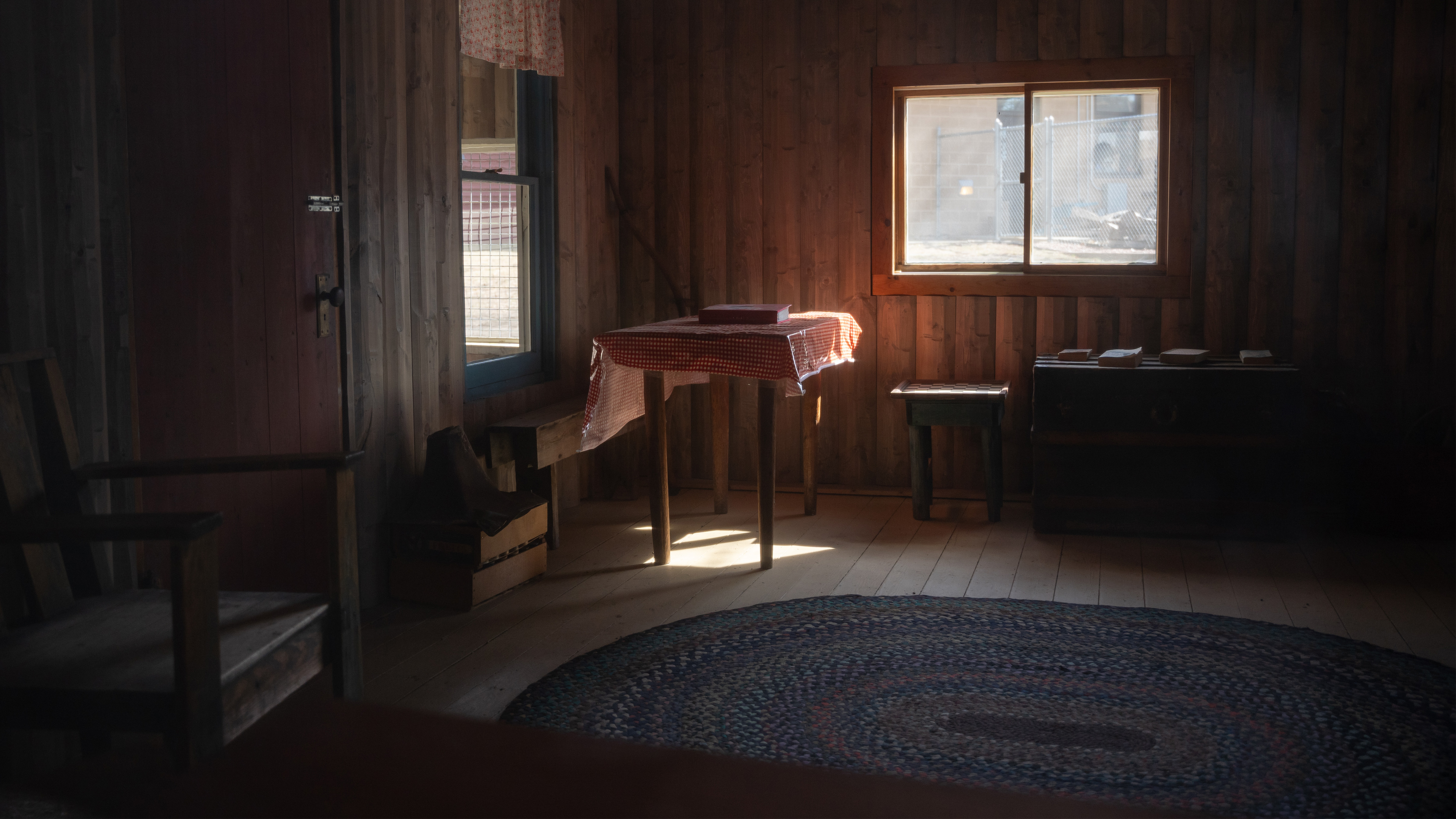It has been 100+ years since Ole Edvart Rølvaag took to his family cabin on Big Island Lake in northern Minnesota — penning what has been described as “the fullest, finest and most powerful novel that has been written about pioneer life in America.”
Rølvaag’s novel, Giants in the Earth — written between September and October 1923, published in Norwegian as two volumes in 1924 and 1925, and translated into English in 1927 — followed his Norwegian family's struggles as they tried to “make a new life as pioneers in the Dakota Territory.”
“Giants in the Earth is often seen as the starting point of Minnesota literature, certainly, the starting point of Norwegian-American literature. It’s one of our first novels that talks about the settler experience,” said Augustana Writer-in-Residence and Professor of English Dr. Patrick Hicks, originally from Stillwater, Minnesota.

As a graduate of Augustana Academy in Canton, South Dakota, Rølvaag’s heritage matches that of Augustana’s.
“Augustana Academy was his (Rølvaag’s) first formal education — he was valedictorian of his graduating high school class so, in a very real way, Augustana shaped his understanding of education, but in a very different way, but just as importantly, Giants in the Earth is essentially set around Garretson (South Dakota). So, that book wouldn’t exist had he not been influenced by Augustana,” explained Hicks.
“Here in the archives of Augustana, we have Ole Rølvaag’s transcript from Augustana Academy. This is part and parcel of the whole story of Augustana’s beginnings in the Dakota Territory,” said Executive Director of the Center for Western Studies Dr. Harry Thompson. “Augustana came through very much the same westward progression that the immigrants did. There’s a correlation between Augustana’s own institutional history and Rølvaag’s personal history.”
Augustana is also where Rølvaag’s family cabin, where Rølvaag wrote his famous novel, would find its forever home.
Facing destruction on U.S. Forest Service land, the cabin that Rølvaag built by hand in 1922 was later dismantled by two carpenters and reassembled in Heritage Park on Augustana’s campus just south of 33rd Street in Sioux Falls. In 2022, the cabin was relocated within a grove of trees west of Augsutana’s Center for Visual Arts along South Grange Avenue — where it stands today.
Unearthing Connections
In preparation of the 100th anniversary of Rølvaag’s novel and telling the story of the region, the South Dakota Symphony Orchestra (SDSO) and Music Director Delta David Gier had conversations with Augustana President Stephanie Herseth Sandlin and Dean of the School of Music Dr. Peter Folliard in the fall of 2021 and spring of 2022. The SDSO had a desire to revive Douglas Moore’s Pulitzer-Prize winning "Giants in the Earth" opera and wanted to explore other programming to support a larger celebration.
Around the same time, Herseth Sandlin began working to secure a historic gift to establish Augustana’s Buntrock Scholars Program with Dean Buntrock, who grew up in Columbia, South Dakota, and is the founder and former CEO of Waste Management, Inc. In one of their calls, Buntrock mentioned an article written in the The New Yorker magazine about the SDSO and how it “became one of America’s boldest orchestras” and wanted to meet the conductor.
“We have a magnanimous president who believes in the entire community, is interested in our heritage, interested in this city and state and its growth. She’s aware that all boats rise in a high tide, so when David Gier pitched this, it was connecting all of the resources,” said Folliard.
Needless to say, Herseth Sandlin didn’t hesitate to make a connection — one that would turn out to be the largest gift that the SDSO has ever received and one that would fund the opera.
“Stephanie was kind enough, thoughtful enough, to say, ‘These two people need to meet.’ There are aligned passions and there’s good reason why this can benefit the continued mutual relationship that the symphony and Augustana have had for 103 years,” Folliard said.
And, with a long history of partnering together, Augustana didn’t hesitate to get behind the notion of celebrating Giants in the Earth in a big way, too.
Augustana’s Giant Celebration

Keeping with the original furniture that Rølvaag built and the desk where he wrote Giants, the Ole Rølvaag Writing Cabin got a facelift in time for the 100th-year celebration. Augustana set aside funding this past summer to support a new roof and improvements to the structural integrity of the building. Thanks to Hicks and some Augustana students, the floor also got a fresh coat of paint.
“I think Rølvaag would be stunned that it is still around 100 years later,” Hicks said.
Serving as a tool for education, Hicks has taken his Advanced Writing Course students to the cabin, providing him the “opportunity to help students understand how place influences their writing, whether they are aware of it or not.”
 “I often tell my students that you can have the story start with the same character with the same problem, but if it’s set in South Dakota it’s going to be a different story than if it was set in, say, the Everglades of Florida,” Hicks said.
“I often tell my students that you can have the story start with the same character with the same problem, but if it’s set in South Dakota it’s going to be a different story than if it was set in, say, the Everglades of Florida,” Hicks said.
Furthermore, the cabin will be open to the public as part of the Center for Western Studies’ 57th Annual Dakota Conference on the Northern Plains.
 The theme of this year’s Dakota Conference, “Settling and Resettling the Plains” isn’t a coincidence, but a deliberate way for the CWS to celebrate the bicentennial of the Norwegian emigration to America, which began in 1825, as well as the anniversary of Rølvaag’s novel. The conference’s major themes coincide with those explored in Giants in the Earth — settlement, homesteading, immigration and migration in the North Plains.
The theme of this year’s Dakota Conference, “Settling and Resettling the Plains” isn’t a coincidence, but a deliberate way for the CWS to celebrate the bicentennial of the Norwegian emigration to America, which began in 1825, as well as the anniversary of Rølvaag’s novel. The conference’s major themes coincide with those explored in Giants in the Earth — settlement, homesteading, immigration and migration in the North Plains.
“The Dakota Conference is designed to give voice to the people of this area,” said Thompson. “We have 62 presenters this year on a wide variety of topics, but several of them are presenting on either Giants in the Earth, immigration or something that relates to the Dakota Territory story.”
The theme also serves as a great prelude to the center’s commemoration of the 250th anniversary of the signing of the U.S. Declaration of Independence in 2026.
Giants in the Earth Anniversary Celebration Schedule
Dakota Conference: Settling and Resettling the Plains | Center for Western Studies
- Thursday, April 24 | 8:30 a.m. - 5:30 p.m. | Center for Western Studies
- Friday, April 25 | 8:30 a.m. - 12:30 p.m. | Center for Western Studies
Rølvaag Writing Cabin Tour
- Friday, April 25 | 12:30 - 1 p.m. | West of the Center for Visual Arts
To view the full Dakota Conference schedule, visit augie.edu/DakotaConference.
SDSO Giants in the Earth Opera
- Saturday, April 26 | 7:30 p.m. | Mary W. Sommervold Hall, Washington Pavilion
- Sunday, April 27 | 2:30 p.m. | Mary W. Sommervold Hall, Washington Pavilion
To purchase tickets, visit augie.edu/GiantsOpera.
